Since his last visit here for CLOUD ATLAS, Florian Gellinger take care of the visual effects for Rise FX of films such as IRON MAN 3, THE BOOK THIEF, GUARDIANS OF THE GALAXY or AVENGERS: AGE OF ULTRON.
How did you get involved on this show?
Just before THE MAN FROM U.N.C.L.E. I was already in contact with Richard Bain, the production VFX supervisor, on another project. Because part of THE MAN FROM U.N.C.L.E. is set in Berlin and RISE is based in Berlin he thought it would be a good idea to have us on board. We would be able to just hop in our cars and get picture reference when needed, visit the city’s photo archives or even take our LiDAR scanner to take measurements of locations like for example the former East German border at Checkpoint Charlie. Knowing Berlin like the back of our hands made it easy to come up with interesting designs that were still 100 percent real world based.
How was the collaboration with director Guy Ritchie and Production VFX Supervisor Richard Bain?
Guy was of course already very VFX savvy from his past movies like SHERLOCK HOLMES. Both agreed very early in the process that shooting in Berlin doesn’t make any sense since the city doesn’t look anything anymore like it did in 1963 – in the time of the Cold War. They wanted to shoot everything in London and make it look like Berlin. Not as easy as it sounds because the cities’ architectures are fundamentally different.
What was their approach about the visual effects?
They did a lot of previs with Proof to get all the beats for the action exactly right. This was especially important for stunts as Guy was imagining some of the action as a “ballet of cars” – something not only very difficult to execute physically but also hard to design. Previs gave Richard and Guy the ability to pitch many ideas already in pre-production and to pick the ones best fitting the mood of the film.
What are the sequences done by RISE?
We were hired to take care of all Berlin shots – and we did. The movie kicks off with Napoleon Solo, the CIA’s best spy, crossing the East German border in Berlin at Checkpoint Charlie, a partial set build that had to be digitally extended by us. During the following title sequence Solo changes Taxis a couple of times to loose possible followers from other intelligence agencies – traveling through various locations in Berlin. He ends up at Gaby Teller’s garage – and escapes with her in her car at night trying to make it back to West Berlin. But the KGB’s best spy, Illya Kuryakin brilliantly portrayed by Armie Hammer, is hard on their tail. He chases them through half of East Berlin. Solo and Gaby make it onto a rooftop directly next to the Berlin wall and escape to West Berlin using a zip wire. The next day both the CIA and KGB meet at a cafe that we imagined to be in Berlin’s central park, the “Tiergarten”, right next to the Berlin Wall.
Can you describe one of your days on-set and then during the post?
On set I was eating a lot watching Richard work. During post I was still eating all day watching Kerstin, Jonathan and Oliver (my producer, compositing supervisor and CG supervisor) work on the shots and schedules. So basically there was a lot of eating involved on my part. But I would also buy old Berlin city maps online to think of a way were the various sequences could have been located in the real city of Berlin. I was watching after 2nd unit for the car chase while Richard stuck with main unit. Jonathan (my comp supe) was on set with me and we made sure we had a LiDAR scan of everyone and everything, just in case.
How did you approach the creation of Berlin?
As I mentioned earlier Berlin today doesn’t look anything like it did in 1963. Richard pitched the idea to LiDAR scan derelict facades in Poland and use those scans as the foundation for our set extensions. We took roughly 60-70 facade scans, modified them to match Berlin construction standards in height, number of floors, size of windows and doors, built different libraries of roof tiles, antennas, chimneys, sidewalks, streetlights, signs, cars, trees, park benches, leafs, dirt, barb wire, watch towers and the Berlin Wall itself. There were of course also a couple of one-of shots where we created matte paintings based on pictures we took ourselves or that we had found in historic archives.
Can you explain in detail about the creation of those views?
The asset based pipeline that we built over the years allowed us to layout the scenes in Maya using lightweight proxy geometry. Once layout artists and animators were done with their work they would transfer the layout data into SideFX Houdini for lighting. All scenes were rendered with Mantra from Houdini. The huge advantage of our pipeline is that we can render everything, including particles and fluids, in one pass from Houdini and have the lighting affect the simulations and the other way around. Also things like the roof tiles and hires buildings would only be loaded at render time making the scenes incredibly easy to handle. For example our roof tile tool would allow us to control the libraries of tiles used (from brand new to dirty and derelict), scatter them on the roof tops randomly while also applying controllable rotation to them – to go from perfect alignment to just a little more imperfect.
What is the best way in your opinion to create these kind of environments?
It depends on how much the camera moves, the type of lighting and how much photographic source material you can dig up. The one thing we always do however is to roughly block everything out in 3D using Maya, just using standard primitives to make sure everything from that point on is being done in the right scale and perspective. From there it’s either a 2D matte painting based on the 3D scene blocking, a 2.5D projection of a matte painting or, if the camera moves a lot or we just happen to have the 3D assets available, a 3D rendering.
A great car chase happens. How did you approach this sequence?
Looking at the old city maps we defined individual streets that they could have been driving on and tried to create digital representations of these streets. The first step for every shot was always the LiDAR scan of the shooting location. We would matchmove the camera and align it to the LiDAR geometry and for some shots we also matchmoved the cars using their respective scans. Using this basic scene layout we’d go in and decide on how wide the street should be, where the sidewalks would go, set up digital streetlights where the practical lights were on set and position buildings from our library. For some shots we’d rotoscope the cars and actors completely. This would give us a first pass very fast and we were able to base all following decisions on this render.
During the car chase, the camera moves from a wide shot to close-ups on the cars. How did you create this really cool shot?
All of this was decided while editing – so there was nothing specifically shot for this. Guy and his editor James Herbert had the feeling that the chase needed this first beat to establish the setup of the chase. We received plates of the close-ups with the actors driving the cars. After matching the cameras of the close-ups we made a quick postvis of the wide shot and the timing for the transitions. Richard went out and shot a plate of the real cars doing just that in front of a black screen lit with streetlight type lighting. After matchmoving cars and camera of the re-shoot we decided to go full-CG on the wide using the object tracks of the cars as a starting point for animation. That way we were more flexible with our virtual camera when flying in and out of the close-ups. The re-shoot footage was the best reference for reflections and color values we could have ever wished for. But having everything rendered in one pass made the lighting more consistent.
Can you tell us more about the shooting of this car chase?
Most of the actual chase was shot in the Chatham shipyard. We had a long strip of road where stunts could execute all the things seen in the previs. We knew the backgrounds would have to be replaced completely – you just don’t find red brick that much in Berlin and if you do it has a different pattern to it. We didn’t bother to put up a greenscreen either because it would have polluted our lighting with green spill and when shooting cars it’s especially useful to not have greenscreen reflecting all over their surfaces. The art department built some road construction for when Ilya get’s stuck with his car. But for the rest of the action we didn’t really bother – it would have been an insane amount of work to dress a total of 7.5 miles of road as Berlin and we had to replace the buildings already anyway. For some shots we ended up replacing the cars completely with their digital counterparts. For one beat Guy just wanted to detach the rigged cars – and we figured it would be easier to go full-CG than to massage the plates. It’s hard to cheat perspective on cars in a super close-up – so sticking with the object tracks and camera move of the original plate but just slightly changing whatever Guy wanted to have changed had us end up instantaneously with something that looked and felt right in terms of animation, lighting and perspective.
The rest of the chase was shot at Greenwich’s Naval College – which was historically German architect Karl-Friedrich Schinkel’s inspiration for the “Gendarmen Markt” in Berlin’s Mitte district. So basically it was also our inspiration for turning the Naval College into “Gendarmen Markt” by swapping out background buildings for the “Berliner Dom”, the “Schauspielhaus” behind scaffolding and by changing some details here and there.
One of the car ends stuck between two buildings. Can you explain this shot in detail?
There was a practical build for this on the backlot in Leavesden. The car was rigged to roll down a roller coaster type track and to get stuck between the walls of a partial set build. When Guy saw the footage he had the feeling that the car felt too much as if it was rolling down a track (which it did, of course) and that it was lacking the feel of a jumping car in mid-flight. We replicated the entire shot as one big full-CG setup including a Houdini sim for the car breaking the walls of the buildings. Again – the huge advantage of having a Houdini Mantra rendering pipeline is that it let us use the dust and debris of the breaking building to occlude the headlights of the car, casting nice shadows and causing beautiful volumetric effects. That also gave us the chance to move our camera further back, go wider and to add the Berlin Wall with barbwire in the foreground establishing that they got stuck so very close to their goal. The rest of the sequence is still as it was shot with the partial build so our shot had to blend right in.
The heroes then escape from a roof using a wire. How did you extend the environment for this sequence?
There were two set builds for this on the backlot at Leavesden Studios: A rooftop elevated by scaffolding and the street in West Berlin with the Truck firing the harpoon attached to the wire. We had to tie both physical sets together. The first step in getting there was to take the LiDAR scans of both, to position them where they would need to be in relation to each other and to fill in the blanks with our assets: We added the alley with the car stuck between the buildings next to the rooftop, elevated the rooftop set to be on the 6th floor, arranged buildings around the rooftop and dressed them with chimneys, antennas and roof tiles. We then added the border strip with tank traps, watchtowers and the Berlin Wall and connected this using more buildings to the set build around the Truck in West Berlin. When picking the buildings for this we made sure to have more derelict facades and broken roof tiles in East Berlin, more renovated and freshly painted buildings in West Berlin. The buildings in East Berlin also had to have the windows blocked by bricks and mortar to prevent people from escaping to the West.
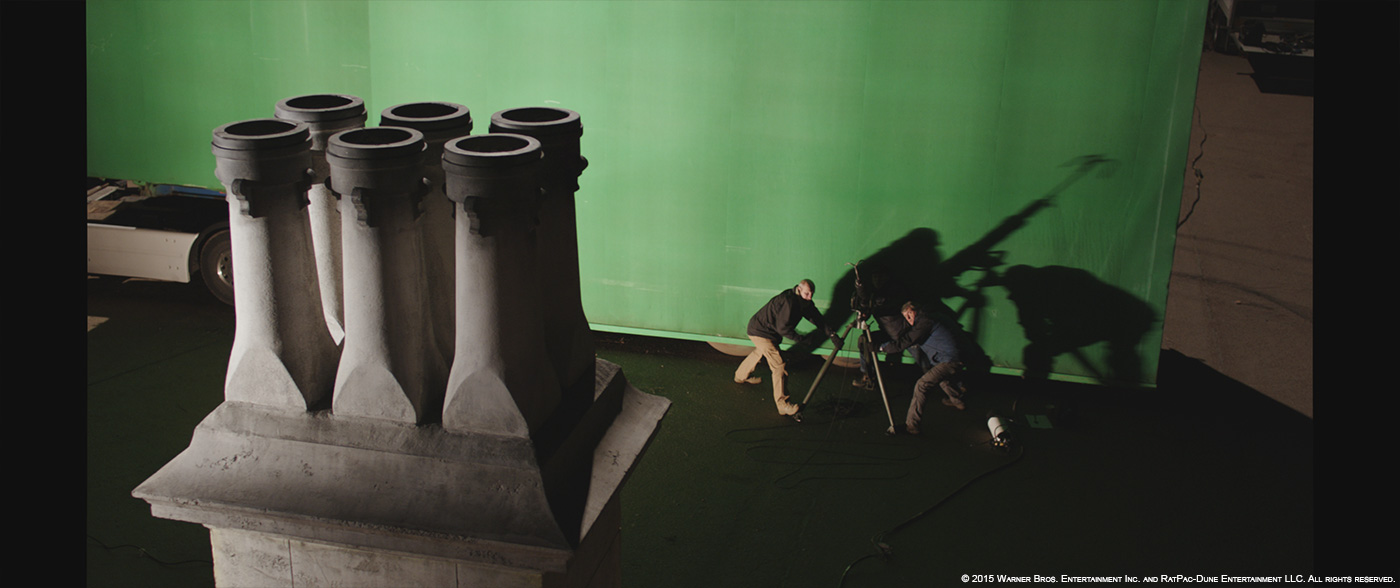
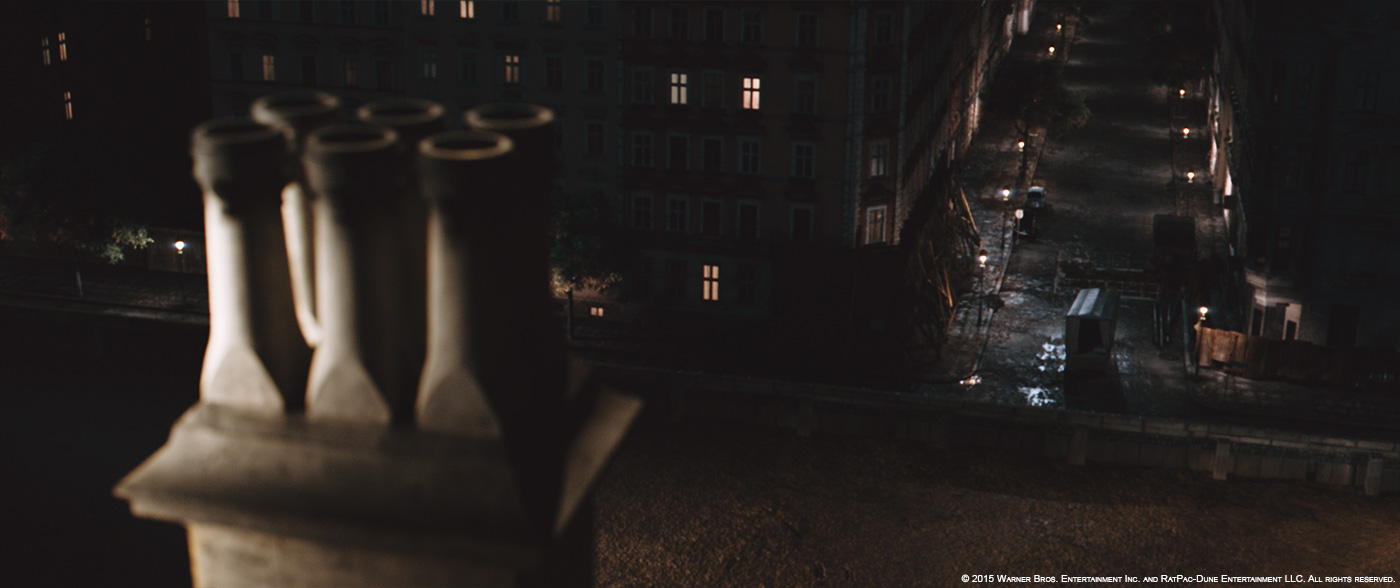
Can you tell us more about the creation of this sequence?
Richard did shoot plates of the Truck arriving, waiting and in the end driving off to West Berlin – but some of the shots ended up being fully CG. Tying plates from both individual set builds together would have ended up being more complicated – and having the plates as perfect references of what we needed to match was sheer luxury.
What was the biggest challenge on this project and how did you achieve it?
The biggest challenge was the amount of shots and the complexity of the environments themselves. I’m still amazed about how calm everyone stayed, how well my producer Kerstin planned our crew size so that we ended up not having to work a single weekend (with the exception being Kerstin herself), how perfect Oliver our CG supervisor knew where to invest the most time and effort because it would show on screen and the way Jonathan our comp supervisor pulled off integrating those countless environments without green- or bluescreens. Our entire team was amazing and I think each and everyone can be incredibly proud of the result.
Was there a shot or a sequence that prevented you from sleep?
Not really – but while editing Guy felt the need to have a trailer shot of the cast jumping off the roof attached to the zip wire, the camera booming back revealing the Berlin Wall and the border strip. The cast wasn’t any longer available for shooting and we needed to recreate them as 100 percent screen size digi-doubles, including hair and cloth simulations while holding on to each other and looking straight into the camera. First tests showed us pretty quickly that we could deliver on the challenge – and I think we did succeed in the end.
What do you keep from this experience?
That you can do everything you want – if you just have all the amazing assets done before shot production starts. It gives you unprecedented creative freedom.
How long have you worked on this film?
Roughly 14 months from reading the script to delivering the last shots.
How many shots have you done?
We started a total of 360 shots, 212 made it into the final movie.
What was the size of your team?
65.
What is your next project?
Something very special and very secret…
A big thanks for your time.
// WANT TO KNOW MORE?
– Rise FX: Dedicated page about THE MAN FROM U.N.C.L.E. on Rise FX website.
© Vincent Frei – The Art of VFX – 2015


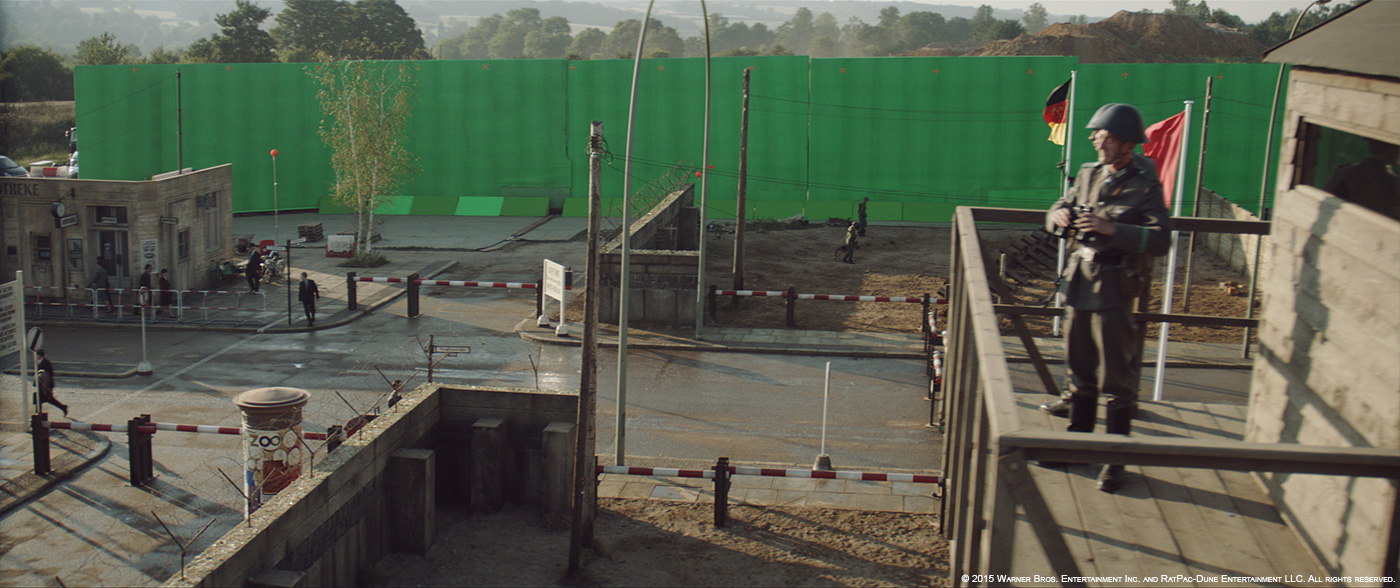
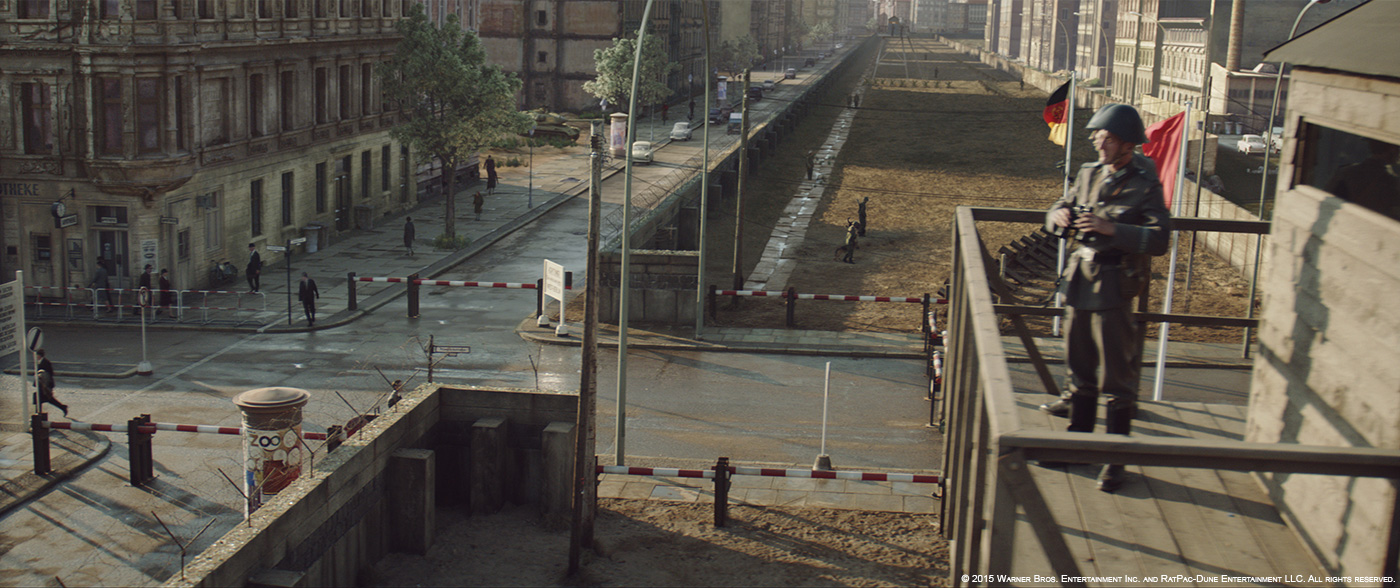
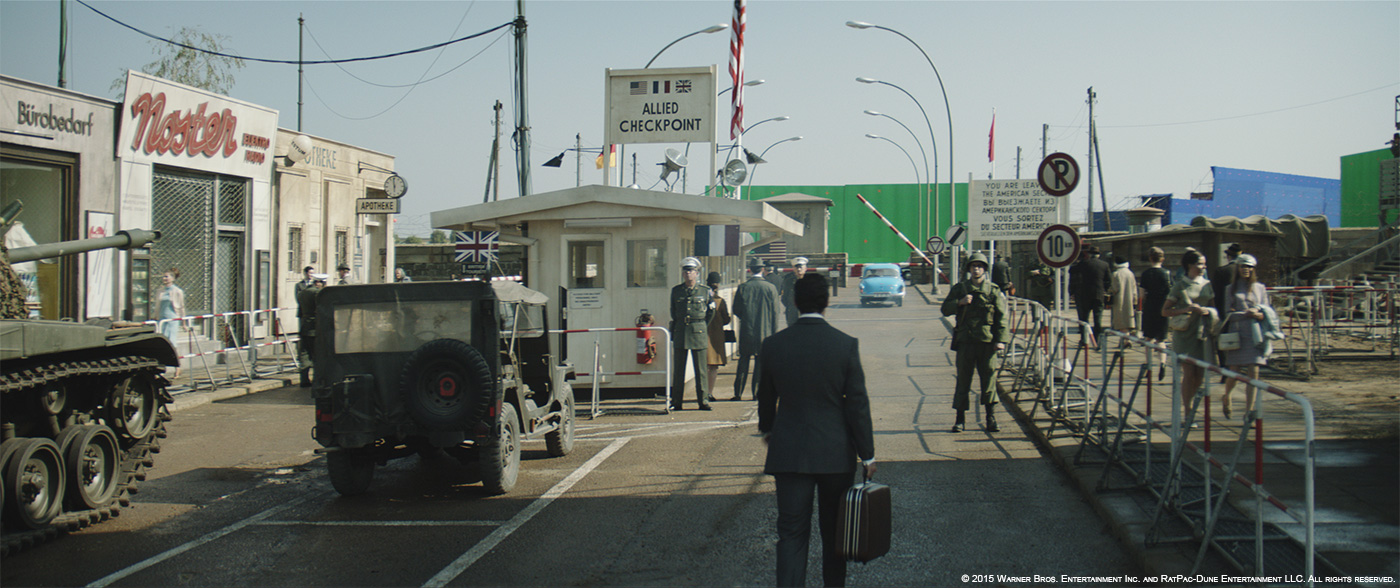
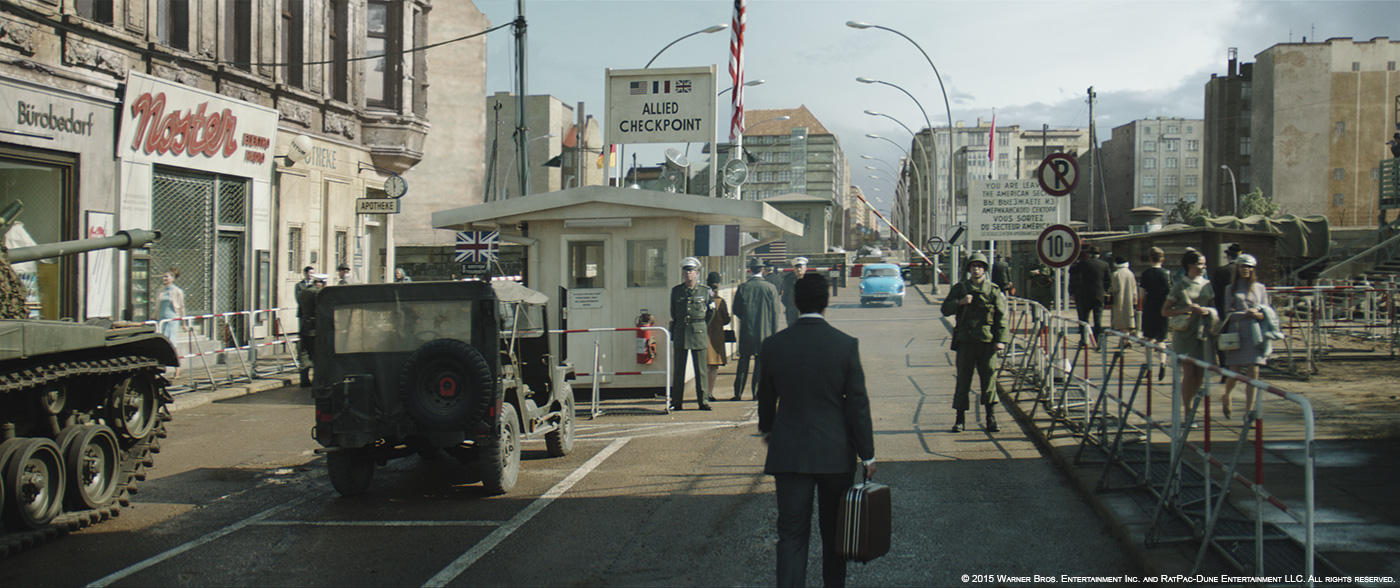
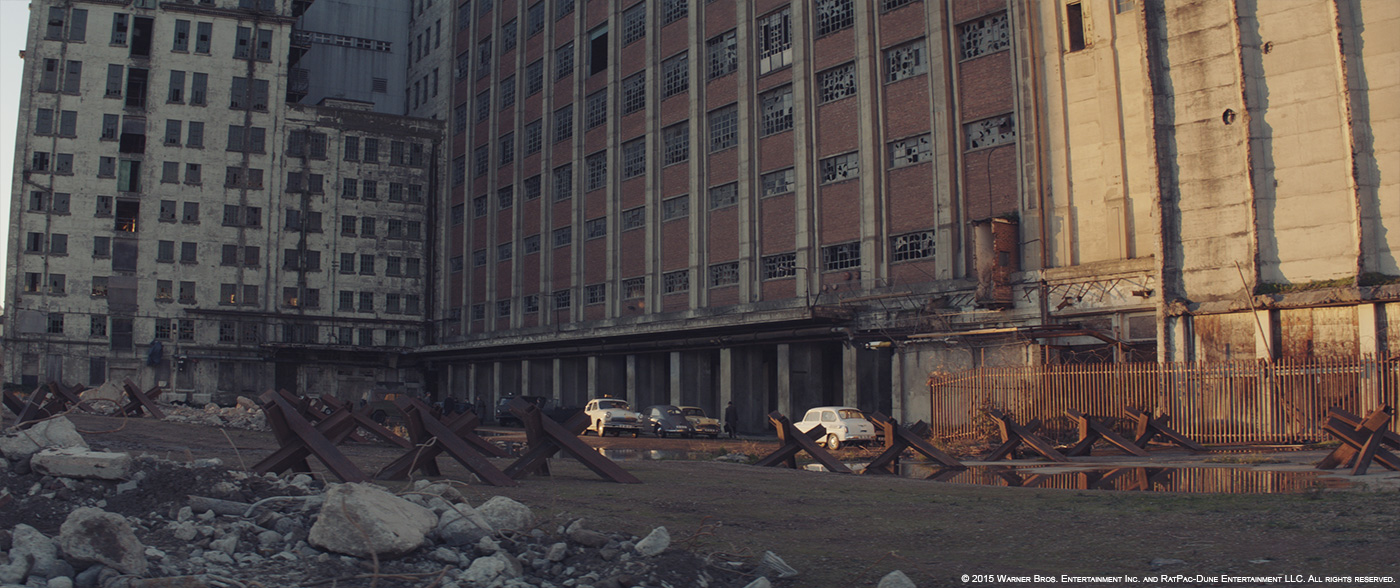
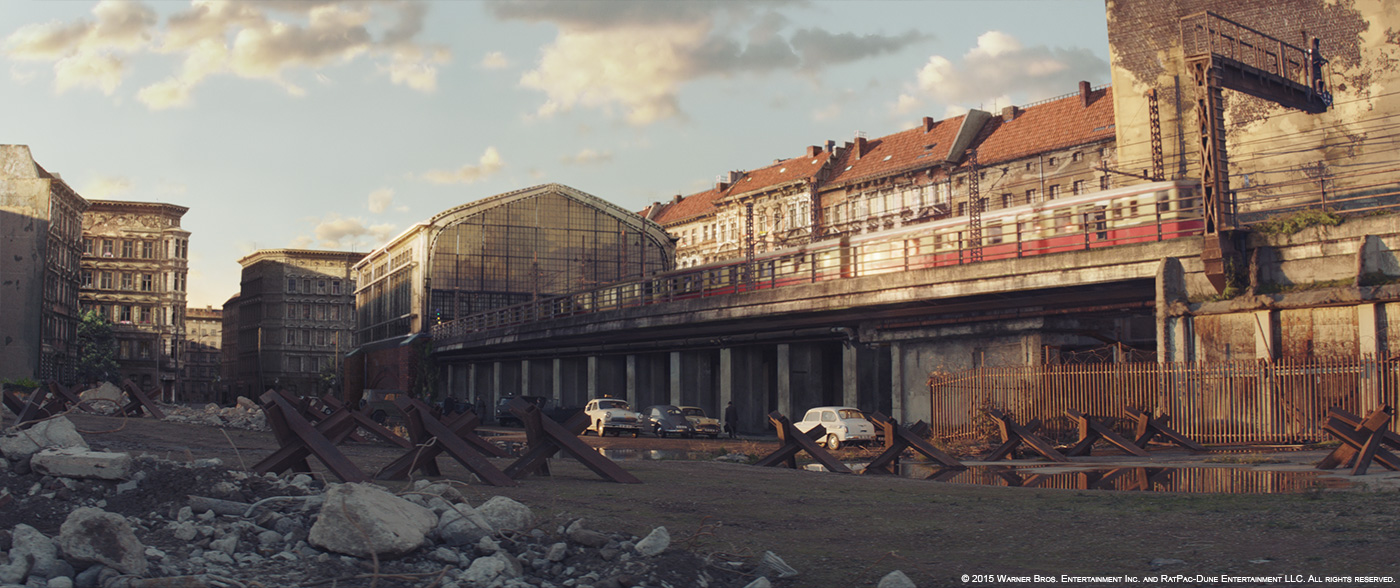
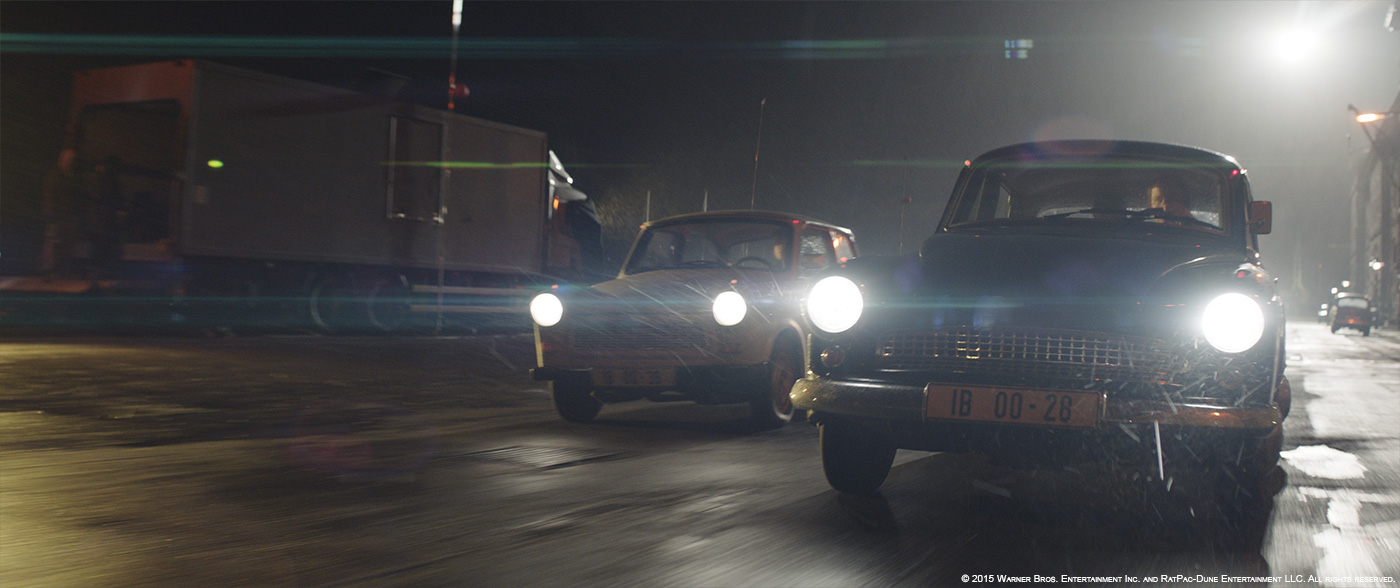
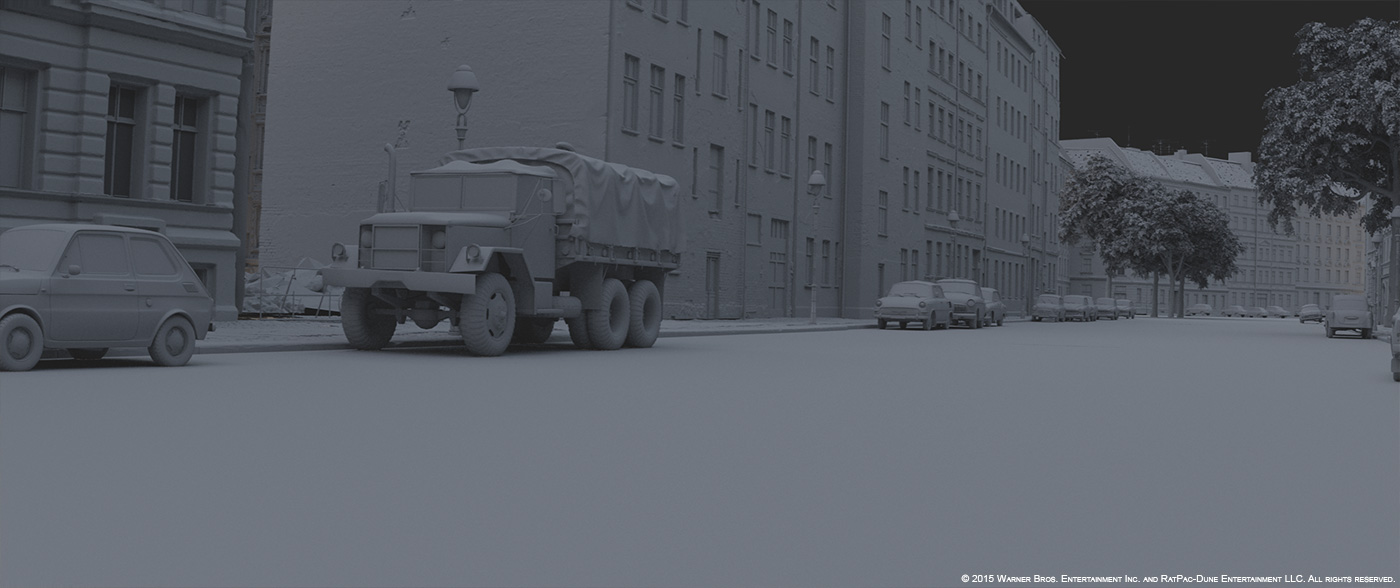
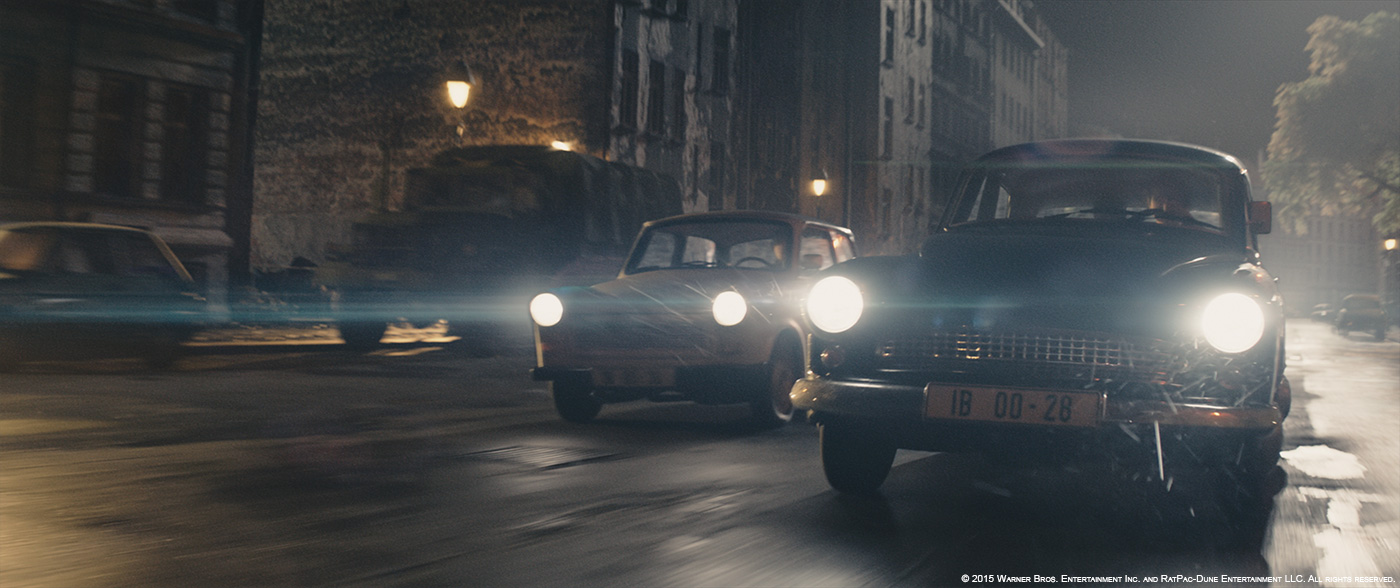
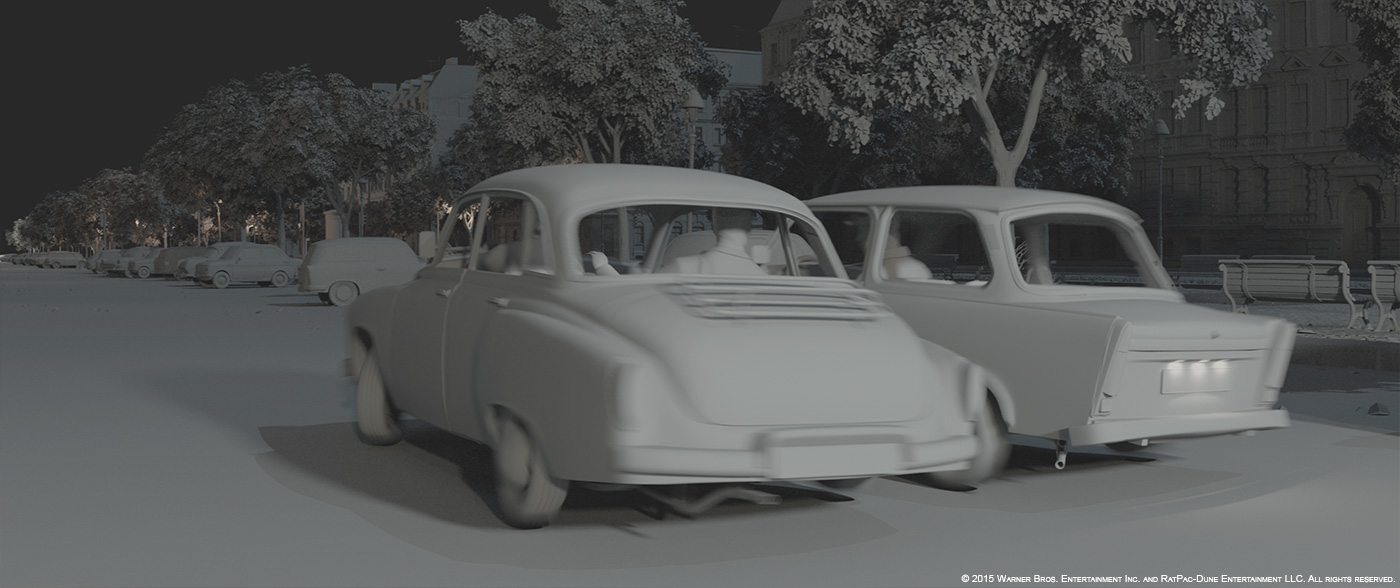
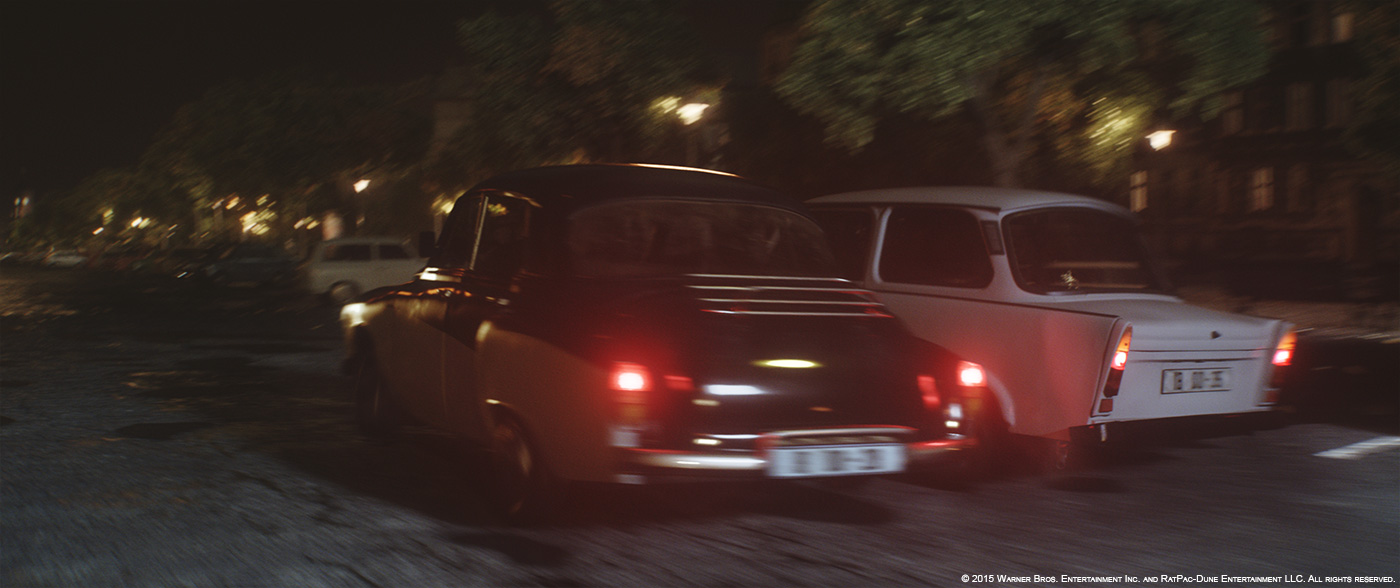

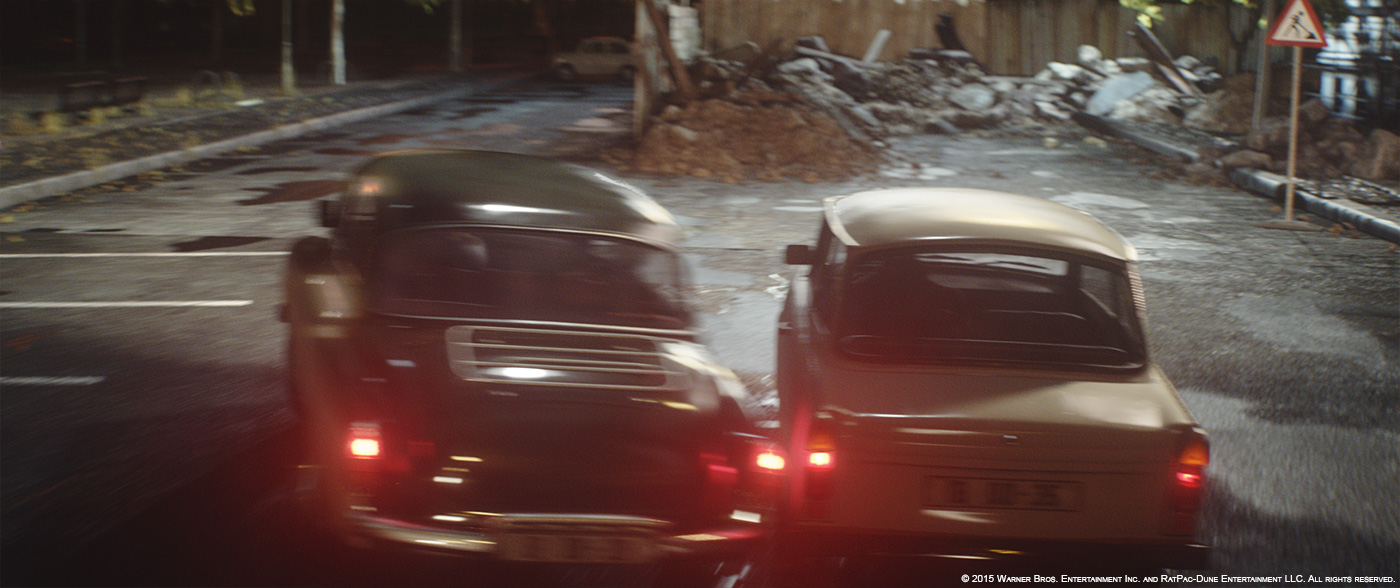
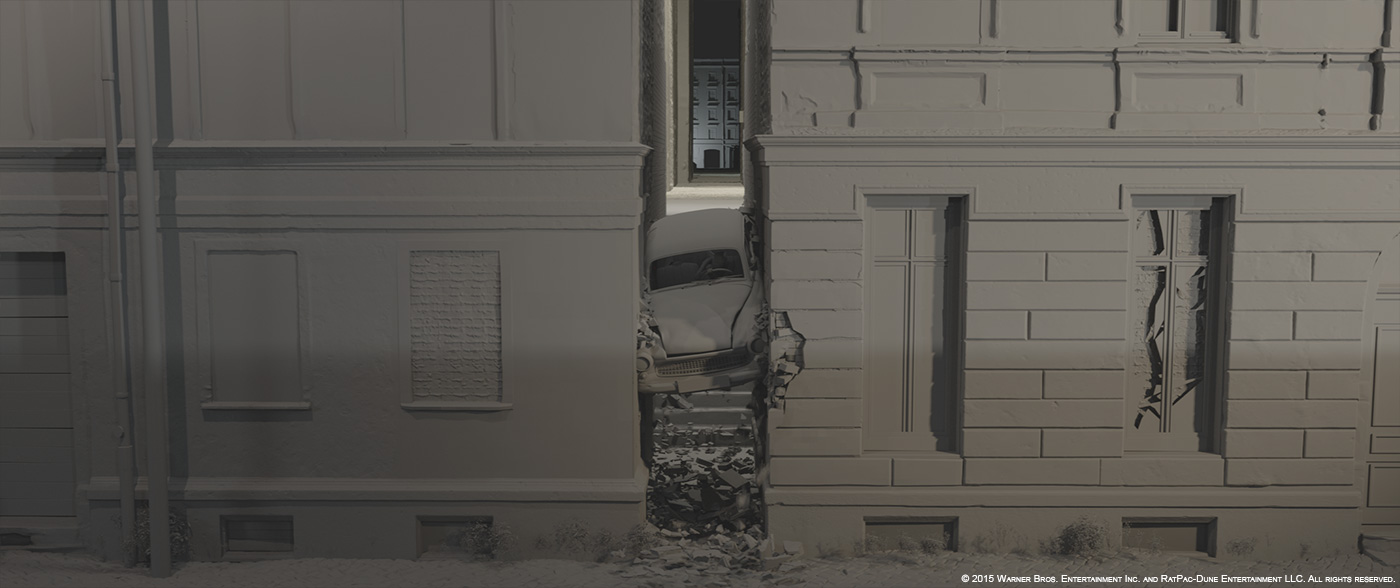
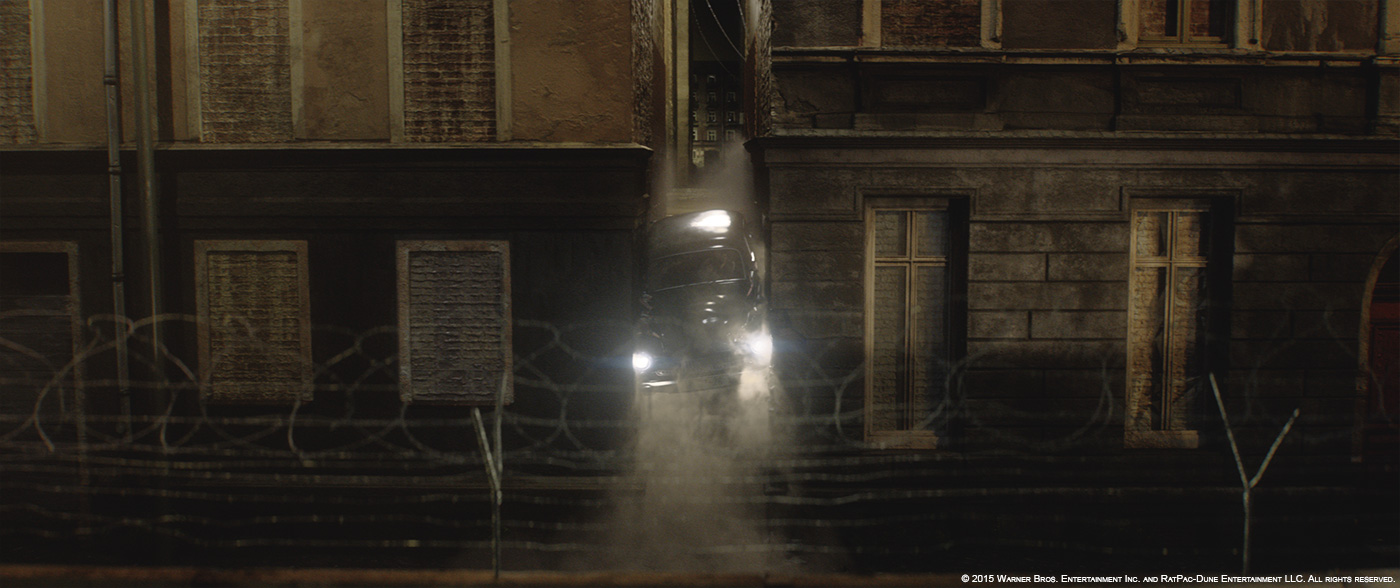
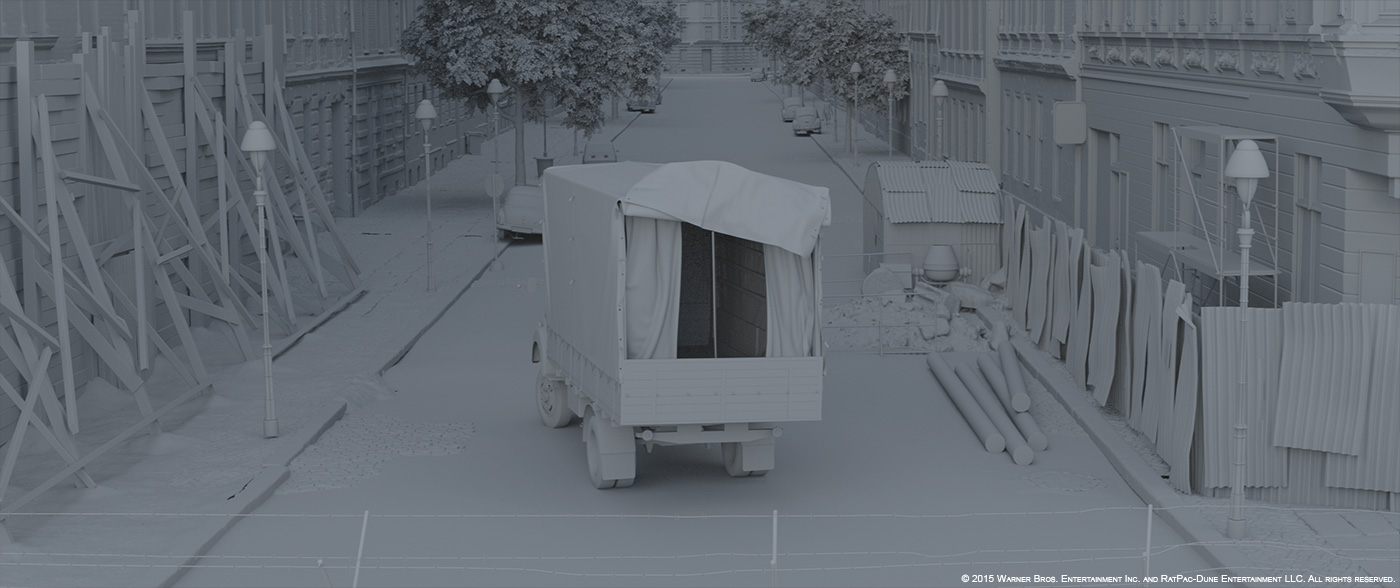
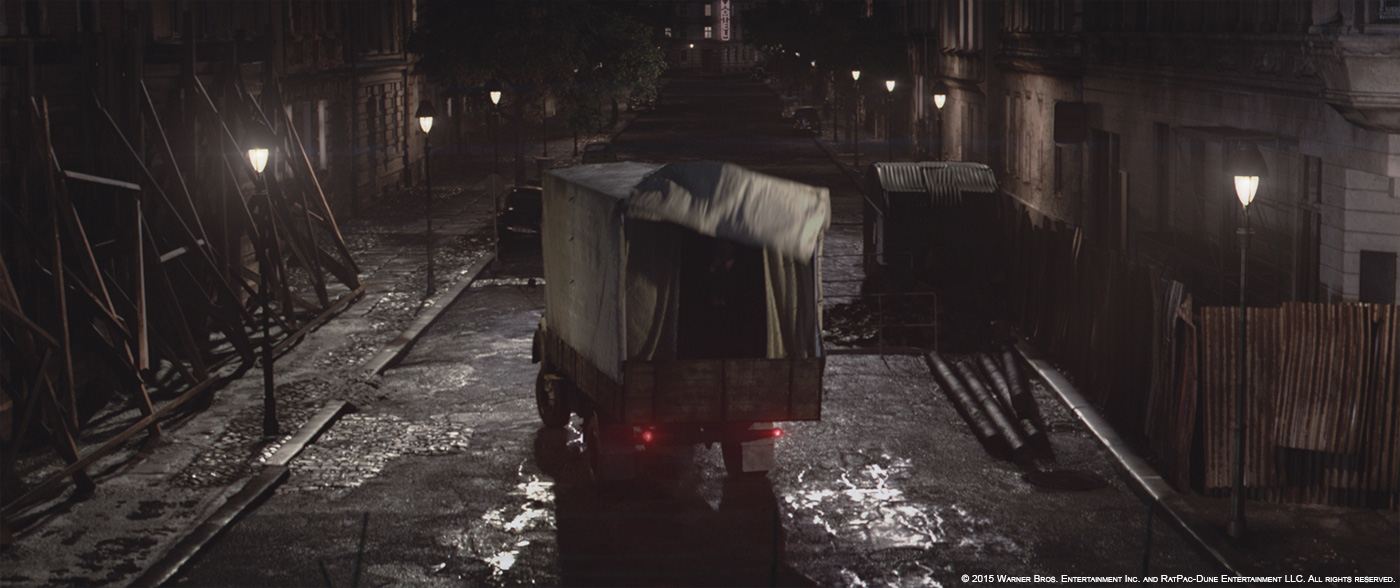
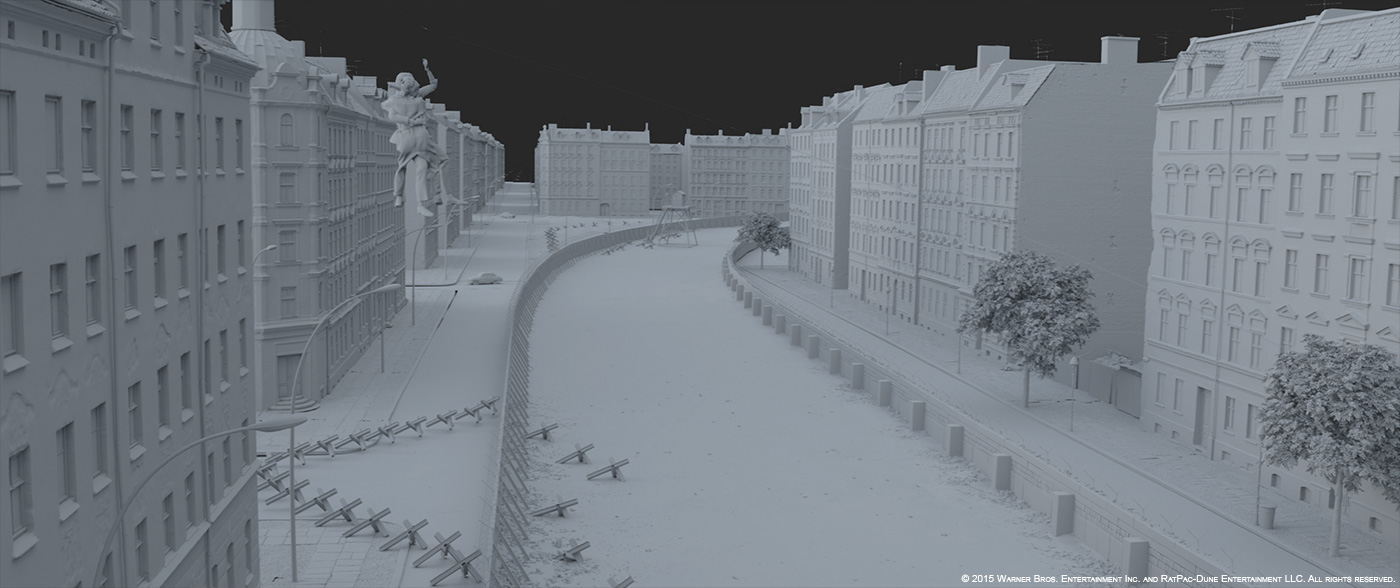
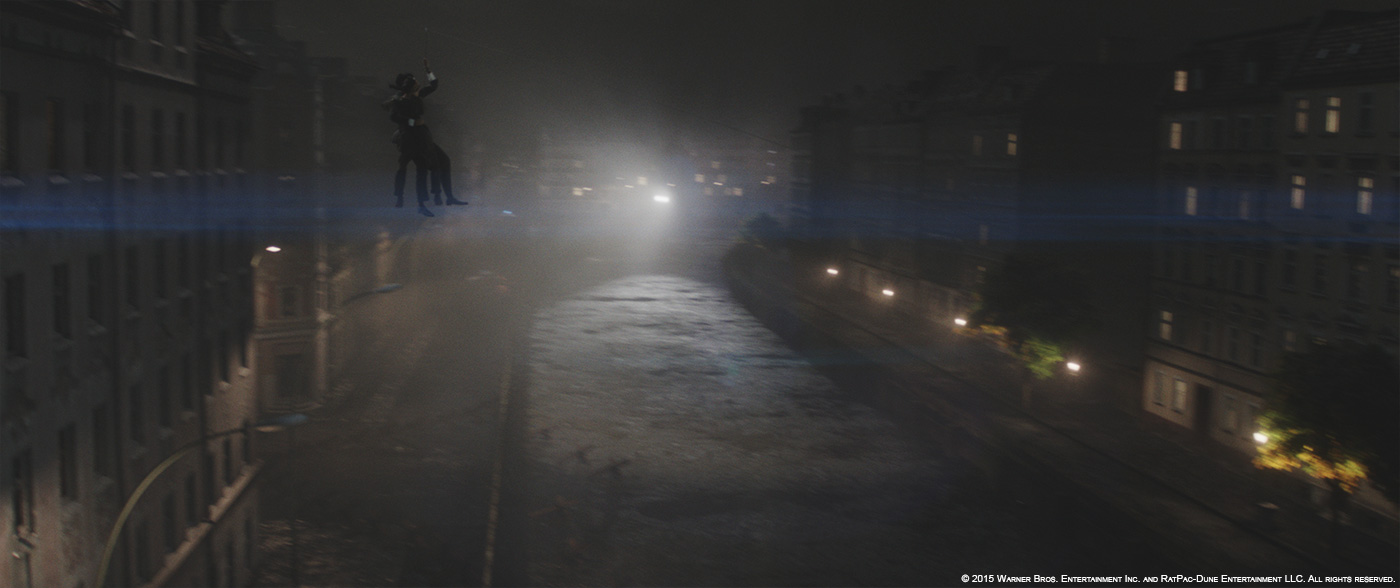



Once again Guy Ritchie makes the best use of visual effects to enhance the story of the film. Congratulations to all involved. This is superb ‘invisible’ digital environment/matte painting work and an excellent example of how CG/matte painting effects, when properly planned a executed, can add huge production value and cost effective solutions to film and TV productions – as well of course to the most demanding video games.